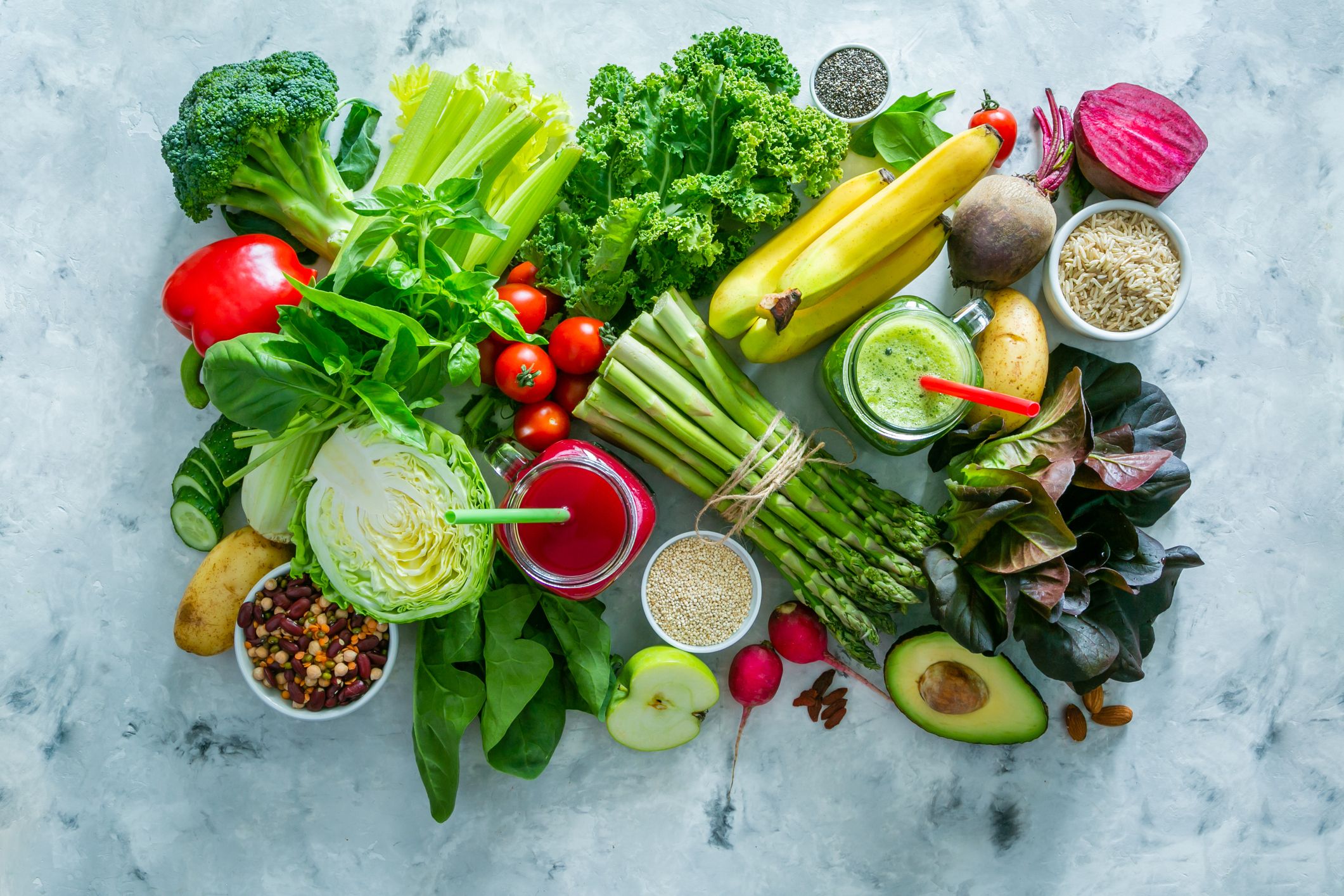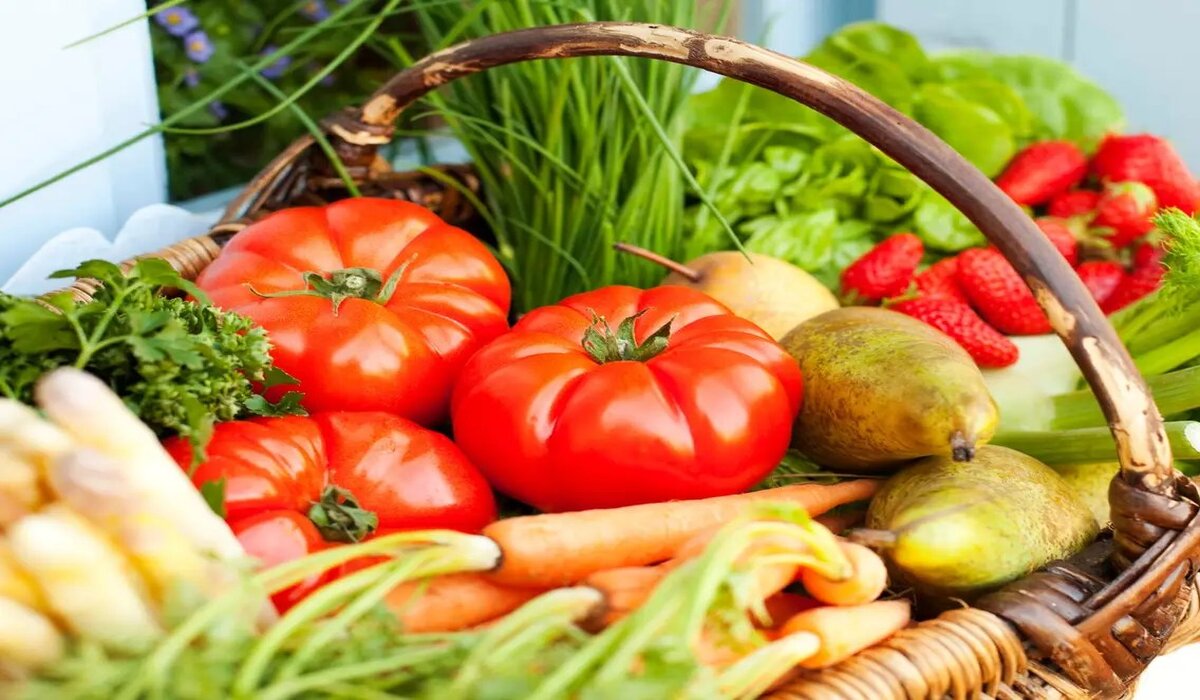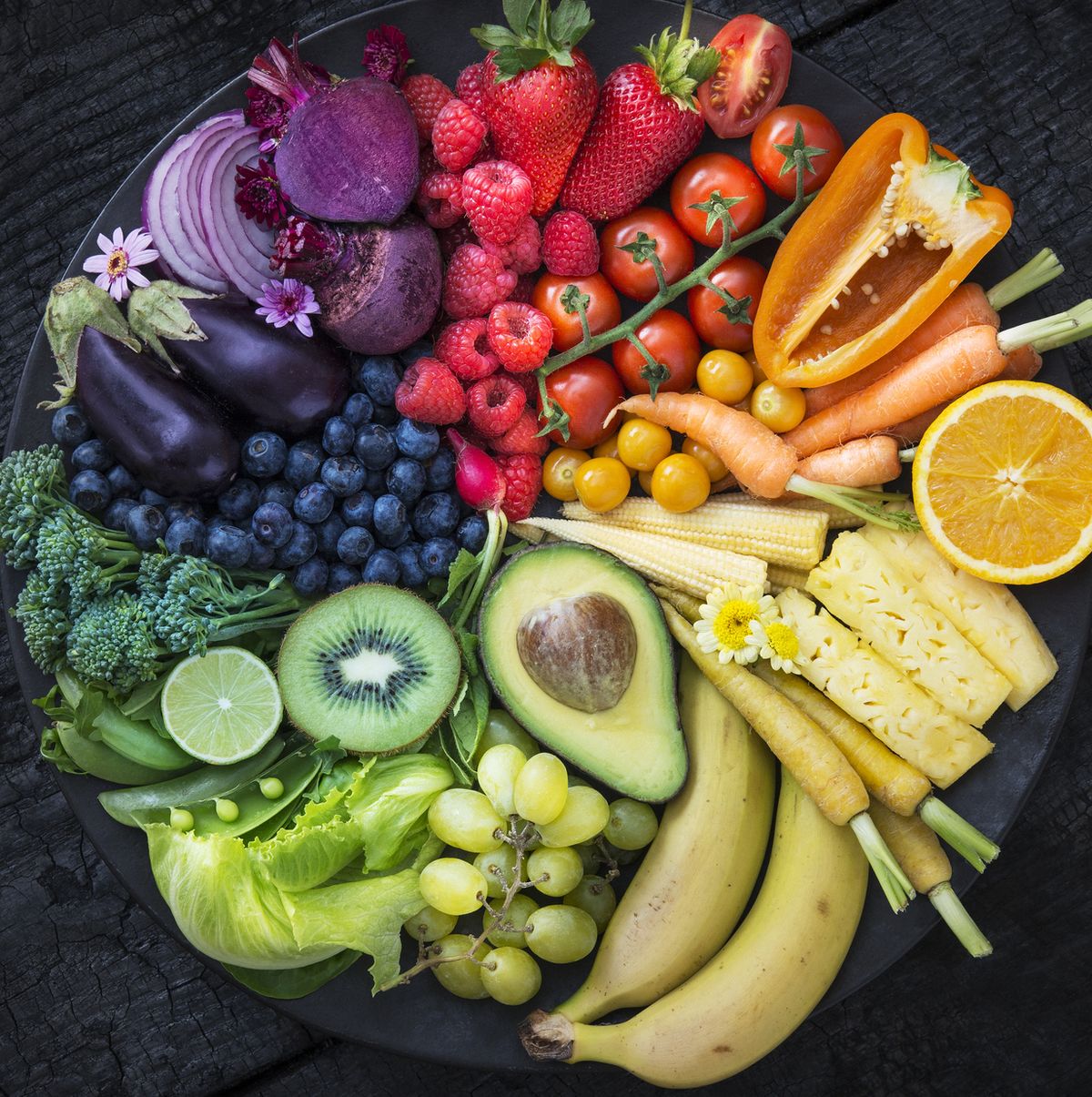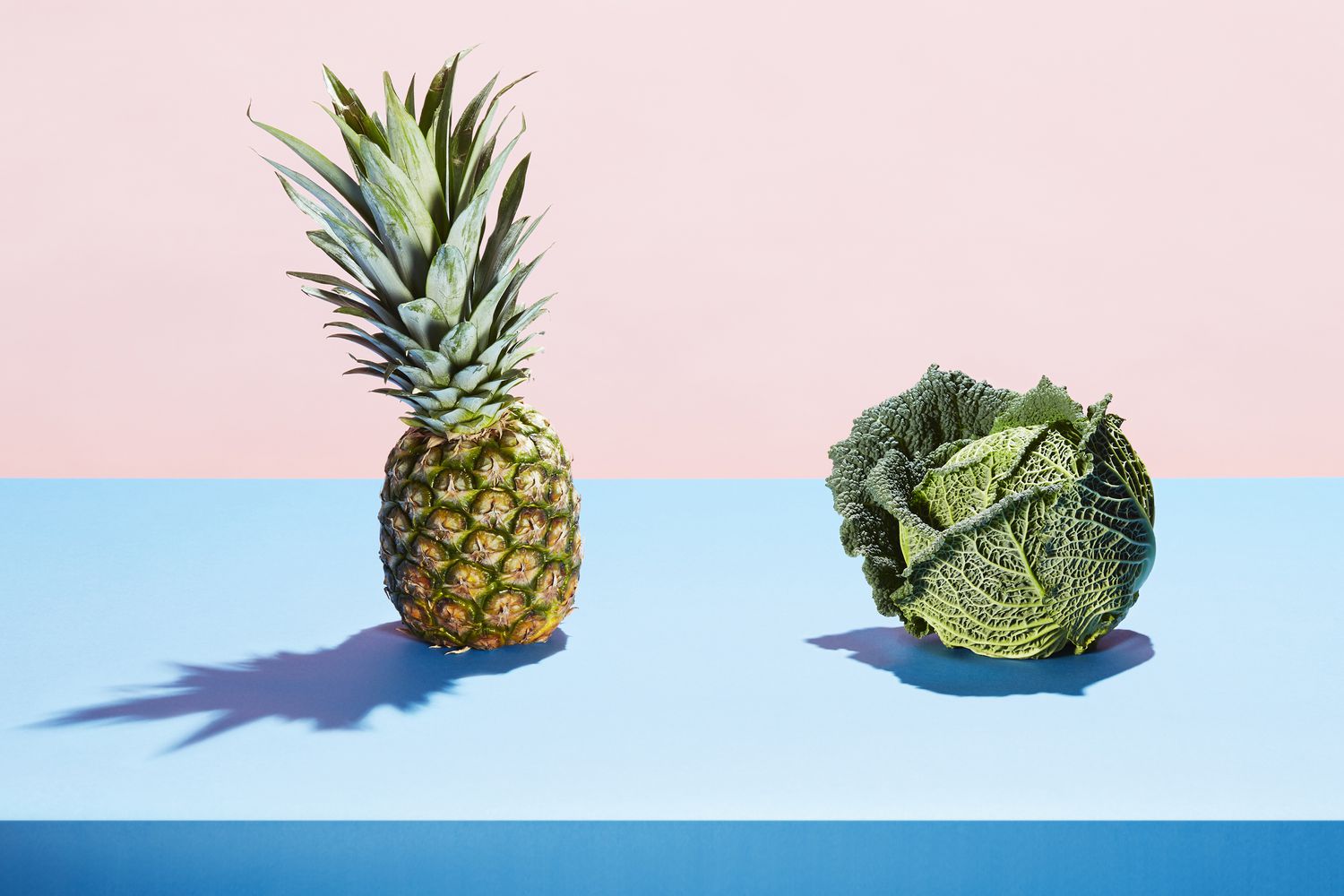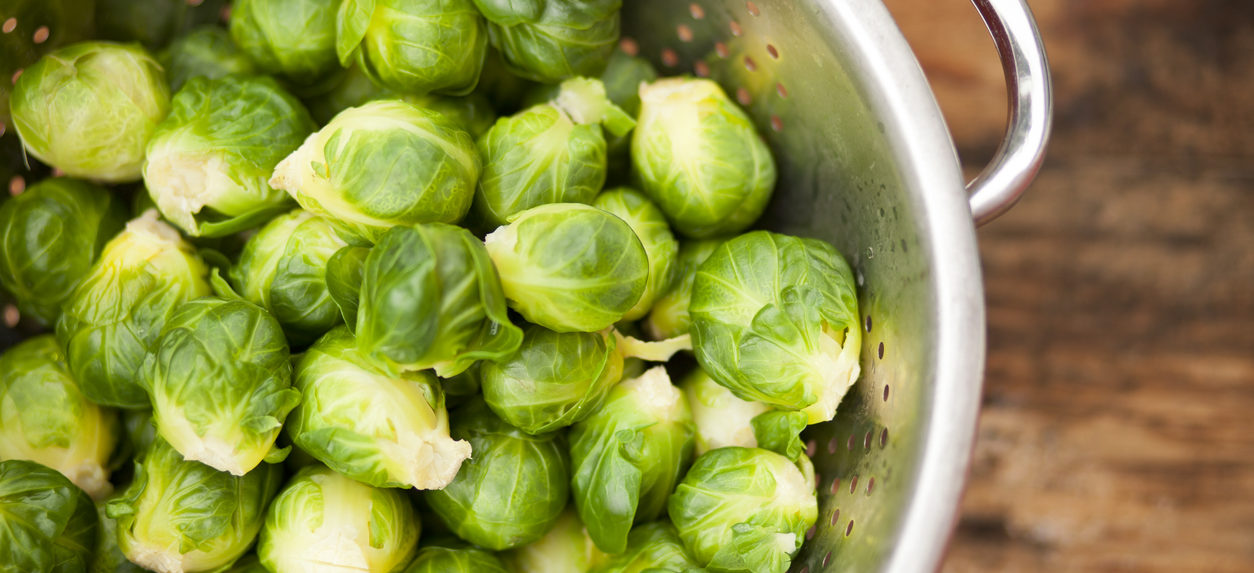Home>Gardening News and Trends>Latest News>How To Wash Fruits And Vegetables With Vinegar


Latest News
How To Wash Fruits And Vegetables With Vinegar
Modified: January 22, 2024
Learn how to wash your fruits and vegetables with vinegar, the latest news in food safety. Protect yourself and your family from harmful bacteria and chemicals.
(Many of the links in this article redirect to a specific reviewed product. Your purchase of these products through affiliate links helps to generate commission for Chicagolandgardening.com, at no extra cost. Learn more)
Table of Contents
How to Wash Fruits and Vegetables with Vinegar
Fruits and vegetables are essential components of a healthy diet, but they can also harbor harmful bacteria and pesticides. That’s why it’s crucial to wash them thoroughly before consuming. While there are various methods to clean produce, using vinegar is an effective and natural way to remove dirt, bacteria, and pesticides.
Here is a step-by-step guide on how to wash fruits and vegetables with vinegar:
- Gather your supplies: Before you start, gather the necessary supplies, including a clean sink or large bowl, water, vinegar, and a scrub brush or sponge.
- Prepare the vinegar solution: Fill the sink or bowl with a mixture of water and vinegar. The ideal ratio is 3 parts water to 1 part vinegar. For example, if you are using 3 cups of water, add 1 cup of vinegar.
- Soak fruits and vegetables: Place the produce in the vinegar solution and let them soak for about 10-15 minutes. This will help loosen dirt, kill bacteria, and remove pesticide residues. Make sure all parts of the produce are submerged.
- Rinse thoroughly: After soaking, remove the fruits and vegetables from the vinegar solution and rinse them thoroughly with water. Use your hands or a brush to gently scrub the produce to remove any remaining dirt or residue.
- Drying and storing: After rinsing, pat dry the fruits and vegetables with a clean towel or let them air dry. Once dry, store them in a clean container or place them in the refrigerator for later use.
It’s important to note that vinegar is effective in removing bacteria and pesticide residues, but it may not completely eliminate all contaminants. Therefore, it’s still essential to buy produce from reputable sources and practice proper food safety measures.
Additionally, certain types of fruits and vegetables may require specific cleaning methods. For example, delicate berries should be rinsed gently to avoid damaging their structure, while leafy greens may require multiple rinses to ensure thorough cleaning.
Incorporating this simple vinegar washing method into your routine can help safeguard your health and ensure that you and your family enjoy clean and safe fruits and vegetables. So, next time you bring fresh produce home, don’t forget to give them a vinegar wash!
Introduction
When it comes to maintaining a healthy lifestyle, consuming a variety of fruits and vegetables is highly recommended. These nutrient-packed foods provide essential vitamins, minerals, and antioxidants that support overall well-being. However, it’s equally important to ensure that the produce we consume is free from harmful contaminants, such as bacteria and pesticides.
That’s where the process of washing fruits and vegetables becomes crucial. Washing produce removes dirt, germs, and residual pesticides, making them safer to eat. While there are several methods for cleaning fruits and vegetables, using vinegar has gained popularity due to its effectiveness and natural properties. Vinegar acts as a versatile cleaning agent, capable of breaking down bacteria, dirt, and chemical residues.
In this article, we will guide you through the step-by-step process of washing fruits and vegetables with vinegar. By following these simple steps, you can ensure that your produce is thoroughly cleaned, reducing the risk of foodborne illnesses and potential exposure to pesticide residues. Plus, unlike some commercial produce washes, vinegar is affordable, easily accessible, and environmentally friendly.
So, whether you’ve just purchased fresh produce from the grocery store or harvested it from your own garden, incorporating vinegar into your cleaning routine can provide an extra level of assurance that your fruits and vegetables are safe to consume.
Why Use Vinegar?
When it comes to washing fruits and vegetables, you may be wondering why vinegar is the go-to choice for many people. Well, there are several reasons why vinegar is a popular and effective cleaning agent:
- Natural and Non-Toxic: Vinegar is a natural product that is safe to use on produce. It is non-toxic and does not leave behind harmful residue that can be ingested.
- Effective Against Bacteria: Vinegar has antimicrobial properties that can kill many types of bacteria including E. coli and Salmonella, which are commonly associated with foodborne illnesses.
- Removes Pesticide Residues: Vinegar is effective at removing pesticide residues that may be present on fruits and vegetables. Pesticides are chemicals used in farming to protect crops from pests, and while they are approved for use, it’s still important to minimize our exposure to them.
- Breaks Down Wax: Some fruits and vegetables are coated with a thin layer of wax to maintain their freshness. Vinegar can help break down this wax, allowing for a more thorough cleaning.
- Accessible and Affordable: Vinegar is readily available in most households and is an affordable alternative to commercial produce washes.
It’s important to note that while vinegar is effective in cleaning produce, it may not completely eliminate all contaminants. Therefore, it’s still advisable to buy fruits and vegetables from reputable sources and practice good food safety habits, such as avoiding cross-contamination and properly storing produce to maintain freshness.
Overall, the use of vinegar for washing fruits and vegetables provides a natural and effective way to reduce the risk of consuming harmful bacteria and pesticide residues. By incorporating vinegar into your cleaning routine, you can enjoy the peace of mind that comes with knowing your produce is cleaner and safer to eat.
Preparation
Before you begin the process of washing fruits and vegetables with vinegar, it is important to make sure you are well-prepared. By gathering the necessary supplies and understanding the correct ratios, you can ensure a seamless and effective cleaning process. Here are the key steps for preparation:
- Gather your supplies: Start by collecting all the supplies you will need. This includes a clean sink or a large bowl, water, vinegar, and a scrub brush or sponge. Having everything ready beforehand will make the process more efficient.
- Determine the vinegar-water ratio: The next step is deciding the proportion of vinegar to water for the cleaning solution. The recommended ratio is 3 parts water to 1 part vinegar. This ratio provides an effective cleaning solution without being too strong or overpowering. For example, if you are using 3 cups of water, mix it with 1 cup of vinegar.
- Use the right type of vinegar: While white vinegar is commonly used for cleaning fruits and vegetables, you can also use apple cider vinegar or distilled vinegar. They all have similar cleaning properties, so choose the one that is most readily available in your kitchen.
- Inspect the produce: Before washing, take a moment to inspect the fruits and vegetables. Discard any items that are bruised, moldy, or damaged beyond consumption. It’s important to work with fresh and high-quality produce to ensure the best results.
By following these preparation steps, you can ensure that you have all the necessary tools and ingredients ready for the cleaning process. This will make the task more organized and efficient, allowing you to effectively remove dirt, bacteria, and pesticide residues from your fruits and vegetables.
Step 1: Gather Your Supplies
To start the process of washing fruits and vegetables with vinegar, it’s essential to gather all the necessary supplies beforehand. This will ensure that you have everything you need within reach, making the process smoother and more convenient. Here are the supplies you will need:
- Clean sink or large bowl: Find a clean sink or a large bowl that is big enough to accommodate the size and quantity of the produce you plan to wash. Make sure the sink or bowl is thoroughly cleaned and sanitized before use.
- Water: You will need water to create the vinegar solution and rinse off the produce. Use clean, cold tap water or filtered water for best results.
- Vinegar: Choose the type of vinegar you prefer for cleaning. White vinegar, apple cider vinegar, and distilled vinegar are all suitable options. Each offers similar cleaning properties, so use the one that is most readily available in your kitchen.
- Scrub brush or sponge: A scrub brush or sponge will come in handy when scrubbing the fruits and vegetables to remove dirt and residue. Choose a brush or sponge with soft bristles that won’t damage the produce’s skin.
Having these supplies ready before you start the cleaning process will save you time and ensure a seamless experience. It’s important to note that using clean and dedicated supplies for washing produce is crucial to prevent cross-contamination. Avoid using items that have been in contact with chemicals or non-food-related surfaces.
Once you have gathered all the necessary supplies, you’re ready to move on to the next step: preparing the vinegar solution. This solution will effectively clean and disinfect your fruits and vegetables, making them safer for consumption.
Step 2: Prepare the Vinegar Solution
After gathering your supplies, the next step in washing fruits and vegetables with vinegar is preparing the vinegar solution. This solution will effectively clean and disinfect your produce, ensuring that any dirt, bacteria, and pesticide residues are removed. Follow these simple steps to prepare the vinegar solution:
- Determine the ratio: The ideal ratio for the vinegar solution is 3 parts water to 1 part vinegar. This ratio ensures the right balance of cleaning power without being too strong. For example, if you are using 3 cups of water, mix it with 1 cup of vinegar.
- Mix the vinegar and water: In a clean sink or large bowl, combine the predetermined amount of vinegar with the appropriate amount of water. Stir the mixture gently to ensure that the vinegar and water are evenly blended.
That’s it! Your vinegar solution is now ready to be used for washing fruits and vegetables. The vinegar in the solution acts as a natural cleaning agent, effectively breaking down dirt, bacteria, and pesticide residues.
It’s important to note that the vinegar solution should not be too strong, as it may alter the taste or texture of delicate fruits and vegetables. The 3:1 water-to-vinegar ratio provides an effective cleaning solution without being overly harsh on your produce. However, you can adjust the ratio based on your preference and the type of produce you are washing.
With the vinegar solution prepared, you’re now ready to move on to the next step: soaking the fruits and vegetables in the solution to remove any contaminants and ensure their cleanliness and safety for consumption.
Step 3: Soak Fruits and Vegetables
After preparing the vinegar solution, it’s time to move on to the next step in washing fruits and vegetables: soaking them in the solution. This step is crucial as it allows the vinegar solution to work its magic, effectively removing dirt, bacteria, and pesticide residues. Follow these steps to soak your produce:
- Place the produce in the vinegar solution: Carefully submerge the fruits and vegetables into the prepared vinegar solution. Ensure that all parts of the produce are fully immersed.
- Allow the produce to soak: Let the produce soak in the vinegar solution for about 10-15 minutes. This soaking time allows the vinegar to break down any dirt, bacteria, and pesticide residues that may be present on the surface.
During the soaking process, the vinegar effectively kills bacteria, removes dirt, and helps eliminate some pesticide residues. This step is especially important for produce with rough surfaces, such as cucumbers or potatoes, as it allows the solution to penetrate and clean deeper into the crevices.
It’s worth mentioning that delicate berries or leafy greens may require a shorter soaking time to prevent them from becoming too soft or wilted. Adjust the soaking time accordingly based on the type of produce you are washing.
While the produce is soaking, take this opportunity to prepare the next step: rinsing the fruits and vegetables thoroughly to remove any residue from the vinegar solution.
Step 4: Rinse Thoroughly
After the soaking process, it’s time to move on to the crucial step of rinsing the fruits and vegetables to remove any residue from the vinegar solution. Rinsing ensures that no lingering vinegar taste or smell remains and guarantees the produce is clean and ready for consumption. Follow these steps to thoroughly rinse your produce:
- Remove the produce from the vinegar solution: Carefully take the fruits and vegetables out of the vinegar solution, ensuring they are no longer in contact with the solution.
- Rinse with water: Rinse the produce under cold running water. Make sure to rinse each piece thoroughly, ensuring all surfaces are washed, and any residue from the vinegar solution is flushed away.
- Use a brush or sponge for stubborn dirt: For fruits and vegetables with tougher skins or stubborn dirt, gently scrub them with a clean brush or sponge while rinsing under water. This will help ensure any remaining debris is removed.
It’s important to note that rinsing with water alone is sufficient to remove any residual dirt, bacteria, or pesticide residues. The water will effectively wash away any traces of the vinegar solution, leaving the produce clean and ready to eat.
Make sure to rinse each piece individually and pay attention to hard-to-reach areas or crevices where dirt may be trapped. By thoroughly rinsing the produce, you are ensuring maximum cleanliness and reducing any potential risks.
Now that your fruits and vegetables have been properly rinsed, you can move on to the final step: drying and storing them before consumption.
Step 5: Drying and Storing
After rinsing your fruits and vegetables, it’s important to dry them properly before storing them. This helps prevent moisture buildup, which can lead to spoilage. Follow these steps to dry and store your produce effectively:
- Pat dry with a clean towel: Gently pat each piece of produce dry with a clean towel. This will remove any excess water and help prevent bacterial growth.
- Air drying: Alternatively, you can let the produce air dry on a clean dish rack or paper towel. This method allows for natural evaporation of moisture.
- Store in a clean container or refrigerator: Once the fruits and vegetables are dry, transfer them to a clean container or store them in a refrigerator. Use containers with lids or tightly seal plastic bags to maintain freshness and prevent contamination.
- Store separately: It’s important to store different types of produce separately to prevent cross-contamination and maintain their individual flavors. Some fruits, like apples, emit ethylene gas, which can speed up the ripening process of other fruits stored nearby.
By properly drying and storing your washed produce, you can extend their shelf life and ensure they stay fresh and safe for consumption. Remember to periodically check the stored produce for any signs of spoilage and discard any items that show signs of mold, decay, or an unpleasant odor.
By following these steps, you have successfully washed, dried, and stored your fruits and vegetables after cleaning them with vinegar. Now, you can enjoy the confidence of knowing that your produce is clean, safe, and ready to be used in your favorite meals and recipes.
Additional Tips and Precautions
While washing fruits and vegetables with vinegar is an effective method for cleaning and removing contaminants, there are some additional tips and precautions worth considering to ensure maximum safety and freshness:
- Choose organic produce: Opt for organic fruits and vegetables whenever possible. Organic produce is grown without the use of synthetic pesticides, reducing the risk of pesticide residues.
- Wash produce before consuming: Even if you plan to peel or cook the produce, it’s still advisable to wash it beforehand to remove any surface contaminants.
- Scrub with a brush: For fruits and vegetables with firm skins, use a brush to scrub them gently under running water. This can help remove dirt and residue effectively.
- Handle with clean hands: Remember to wash your hands thoroughly with soap and water before handling fruits and vegetables to prevent cross-contamination.
- Follow specific cleaning instructions: Some produce, such as delicate berries or leafy greens, may require specific cleaning methods. Research or follow guidelines provided by trusted sources to ensure proper cleaning techniques for these items.
- Store perishable produce properly: Keep perishable produce, such as berries and leafy greens, in the refrigerator to maintain freshness. Use them within the recommended time frame to avoid spoilage.
- Check for recalls: Stay informed about any recalls or safety alerts related to specific fruits and vegetables. Regularly check trusted sources, such as the FDA or local health authorities, for any updates or warnings.
By following these additional tips and precautions, you can further ensure the cleanliness and safety of your fruits and vegetables. Incorporating these practices into your routine will not only provide peace of mind but also contribute to maintaining a healthy and nourishing diet.
Conclusion
Washing fruits and vegetables with vinegar is a simple and effective method for ensuring their cleanliness and safety. By following the step-by-step guide outlined in this article, you can remove dirt, bacteria, and pesticide residues from your produce, reducing the risk of consuming harmful contaminants.
Vinegar, with its natural cleaning properties, acts as a powerful agent in removing bacteria and pesticide residues. It offers a safe and affordable alternative to commercial produce washes, while also being readily available in most households.
- Preparation: Start by gathering all the necessary supplies, including a clean sink or large bowl, water, vinegar, and a scrub brush or sponge.
- Prepare the vinegar solution: Mix the vinegar and water in the recommended ratio of 3 parts water to 1 part vinegar.
- Soak fruits and vegetables: Submerge the produce in the vinegar solution for about 10-15 minutes, allowing the vinegar to break down contaminants.
- Rinse thoroughly: Rinse the produce under running water to remove any vinegar residue, dirt, and bacteria.
- Dry and store: Pat dry or air dry the produce before storing them in clean containers or the refrigerator.
Remember to handle the produce with clean hands, store different types of produce separately to avoid cross-contamination, and follow specific cleaning instructions for delicate items. By incorporating these additional tips and precautions, you can further enhance the safety and freshness of your produce.
Now armed with the knowledge of how to wash fruits and vegetables with vinegar, you can confidently clean and enjoy your fresh produce while promoting a healthy lifestyle for you and your family.

